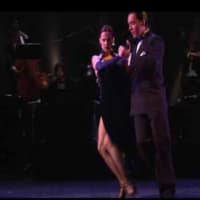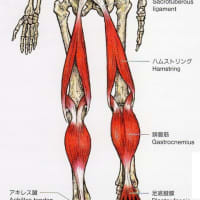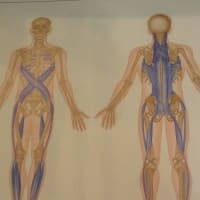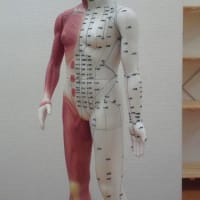It's is not a leaders job to "haul" the follower around the floor every second, nor is it the followers job to just hang there like a sack of potatoes and be dragged.
フォロアーを床の上を引きずりまわすのがリーダーの役目ではないし、じゃがいもの袋みたいにぶらさがってひきずられるがままになるのがフォロアーの役目ではない。
Leading and following is a dynamic process that requires a great deal of effort on the part of both members of a partnership.
リードとフォローは、パートナーとなった両方にそれ相当の努力を必要とするダイナミックな一連の行為なのである。
It is readily possible to lead a woman through a fairly intricate step that she doesn't know _without_ apparent force.
明らかな力を込めることなく、女性が知らない、大変複雑なステップを通して、女性をリードすることは難しくない。
Possible, though it is not within the powers of most men.
それは可能であるが、ただそれは男性の力の中にあるのではない。
If you want women to vie with each other for the opportunity of dancing with you, this is what you must learn to do.
もし、あなたと踊る機会をめぐって女性たちが競争することを望むのなら、これが習得しなければならないことである。
It is skill, not force, you are seeking, (Grasshopper)!
すなわちあなたが求めるべきものは技術であって力ではない。
____
Men who claim they can lead anyone to dance well are not giving their partners enough credit.
どの女性が相手でもうまく踊らせることができると言い張る男たちは彼らのパートナーに十分信頼されることはない。
Women who say they can follow anything are not giving truly good followers enough credit.
なんにでもフォローできると言う女性たちは十分信頼される真のフォロアー足りえない。
Experienced dancers never say such things, because it is simply not true.
経験を積んだダンサーは決してそんなことは言わない、というのはそんなことは単に真実ではないからである。
John Wood would not be world champion with just any woman - Anne Lewis contributes every bit as much to their success.
ジョン・ウッドはそこいらへんの女性とでは世界チャンピオンにはならなかっただろう-彼らの成功の隅から隅までアン・ルイスが貢献しているのである。
To say that all any woman needs is a good leader unfairly detracts from the many very talented female dancers.
どんな女性であってもすべての女性が必要としているのは上手なリーダーだと言ってしまうことは、数多くの才能に優れた女性のダンサーを不当にけなすことになる。
It also places too great a responsibility on the man - it implies that all errors are his fault.
また、それは、男性側に対してあまりにも大きな責任を負わせることにもなる、というのはそれはすべての間違いは男性の失敗によるということをほのめかすことになる。
Sometimes women say, "I just follow."
しばしば女性は言う「わたしは単にフォローするだけ」
This demeans following as a trivial thing, which it most certainly is not.
このように言うことはフォローをつまらないことと貶めることになる。もちろんほとんどそうではないのだが。
____
Partnering skills are vital to good ballroom dancing.
パートナーとの連携技術(tama注:これ以降は連携技術と訳す)は、優れたボールルームダンスを踊る上で不可欠である。
It is very difficult to cover the technique in classes since this is probably the most complex element to couple dancing and takes many years of coaching to perfect.
カップルで踊るダンスに対しては、連携技術はおそらく最も複雑な要素であり、完全なものにするために長い年数の指導も必要であり、レッスンにおいて連携技術をカバーするのは大変困難である。
It is not a matter of simple 'cueing', but an understanding of the entire body and how to make 2 people move as one around a common center.
連携技術は、踊るきっかけを単に示せば良いといった問題ではなくて、体全体の理解と、共通センターの周りで、どのように、二人の人間が一体となって体を動かすのかという問題なのである。
Competitive dancers must work extremely hard with this and it is actually tougher with couples who are 'used to each other' than with perfect strangers.
競技ダンサーはこの連携技術について一生懸命練習しなければならない。実際連携技術は、初めて会った人同士より、お互いに慣れた者同士のほうがずっと難しい。
For example, when I have just had a coaching session working on my technique, the slightest change (such as a minute timing delay in a weight change) will totally throw my partner.
たとえば、自分の技術に関するコーチングセッションを受けたとき、ごくわずかの変更(たとえば体重の切り替えの際のほんの少しの遅れのように)をしただけでパートナーを完全に放り出すことになる。
She starts fussing that I don't feel right anymore, or she will interpret the change as a lead to some other move that I used to do with her.
そうすると彼女は不平不満を言い始める、私はもう全然正しくやっていないとか彼女に対して前はよく仕掛けていた別の動きへのリードとして解釈してしまうなど。
However, I apply the same new technique to other competent dancers whom I rarely dance with and, voila!, it works beautifully!
しかし、私が、その同じ新しいテクニックを、ほとんど踊ったことのないダンサーたちに仕掛けてみると、一丁上がり、すごくうまく行く!
Apparently, a longtime partner can get very used to the feel of their partner, and it is tougher to practice any improvement or change.
明らかに、ながくカップルを組んだパートナーほど自分のパートナーのフィーリングに慣れてしまい、そこからの改善なり変更を練習するということがより困難になるのである。
(I heard the exact same complaint from Jim Maranto - the current US American Smooth Champion - re: his partner/wife)
(私は、現在のアメリカンスムースの米国チャンピオンのジム・マラントから、彼の奥さんであるパートナーが全く同じ不平を唱えていたということを聞いた。)
____
Even competitive routines are led/followed.
競技のルーティンでさえリード/フォローされる。
Any competitor taught "dance your own part and let your partner dance theirs, you don't have to lead/follow" has been taught wrong!
「自分のパートを踊れ!パートナーには彼らのパートを踊らせろ!リード/フォローする必要はない」と教えられた競技選手はだれであっても間違ったことを教えられているのである。
The judges can tell the difference between a couple with a real lead/follow "connection" and a couple that is just going through their routine.
競技会の審判は本当のリード/フォローを身に付けたカップルと、単に自分のパートのルーティンを踊っているカップルとの違いを見分けることができる。
One competitor writes "Ballroom is social dancing - it is dependent on lead and follow, even in competition.
ある競技選手は「ボールルームダンスは社交ダンスである。競技会においてさえもボールルームダンスはリード/フォローに依存している」と書いている。
My competition (Standard - "smooth") partner and I have a few pre-choreographed "amalgamations" we use in competition, but I still always have to rely on his lead to know what we're doing, where we're going, what timing he's going to use this time, how he feels like expressing it this time..."
私の競技でのパートナーと私は、競技会でつかういくつかのアマルガメーションを持っているが、それでもこの次は、何のステップをするのか、どちらの方向へいくのか、どんなタイミングでするのか、今回はどのようにそれを表現するのかについては、彼のリードに基づいている。
Another competitor writes "there is most definitely lead and follow, even in competitive Latin where one's routines are choreographed to the hilt.
別な競技ダンサーは「ルーティンがきっちり決められている競技ラテンにおいてさえも、ほとんど確実にリードとフォローは存在する」と書いている。
My partner and I have spent countless hours, with coaches and without them, working on *nothing* but this one aspect of the dance.
私のパートナーと私は、このダンスにおける一つの側面としてのリード/フォローだけを、コーチとともにあるいはコーチなしで、数えきれない時間、練習を積んできた。
Good lead and follow is critical in Latin dancing, both for the sake of speed, control and balance, but also simply because a step well-led and followed is a thousand times more pleasurable to dance for both partners."
良いリードとフォローはラテンダンスにおいて、スピード、コントロール、バランスのために両方とも決定的に重要であるが、同時に上手にリードされフォローされたステップというものは、パートナー双方にとって何千倍もの喜びをもたらしてくれるものなのである。
Without even dancing with them you can tell the competitive dancers who can't lead and follow; just look for the couples who keep running into others on the floor.
(競技会において)だれがリードやフォローできていない競技選手なのか、彼らと踊ってみなくても、みんな見分けることができる。
ただフロアの上でほかの選手に突っ込んでいてばかりいるカップルを探せばよい。
Because they dance their own parts, they have not developed and practiced the dynamic process of leading and following (floorcraft) required to negotiate around obstacles and unexpected incursions into their line of dance.
なぜなら、そういうカップルは、それぞれのパートだけ踊っており、周りの障害物(tama注:他のカップル)や自分たちの進路をふさぐ侵入者たちと折り合いをつけるために要求される、フロアクラフトと呼ばれるリードとフォローのダイナミックなプロセスを身につけることも練習することもしないからである。
Even with a routine, there is still a need to change directions unexpectedly, or completely alter a routine to deal with the fact that other couples are also dancing.
ある一つのルーティンであっても、他のカップルたちだって踊っているという事実を何とかするために、思わず進行方向を変えたり、ルーティンを全く変える必要はあるのである。
In competition, there is *never* a place in the routine where lead-and-follow are not taking place.
競技では、リード/フォローが起こらないルーティンなどあり得ない。
Even in the Latin dances, and even when the couple know the routine, you *must* lead.
ラテンダンスでさえ、しかもカップルがルーティンを良く知っていてさえ、リーダーはリードしなければならない。
Most of the steps you perform in competition dancing require a special attention to lead and follow;
競技ダンスにおいて選手が踊るステップの多くはリード/フォローへの特別な注意を必要とする。
you see this aspect where good competitive couples can make the dancing appear to take no effort, and therefore appears that no lead-and-follow is happening.
上手な競技カップルがダンスを楽々とこなしていて、そのためリードとフォローをしていないように見えるといった状況をあなたは見ることだろう。
That is an instance of good dancing, not no lead and follow.
このことは上手なダンスの例であり、リード/フォローがないということではない。
There is lead and follow happening, even when the couples are dancing side-by-side and not touching.
カップルが横に並んでいてどこも触れずに踊っているときでさえリード/フォローは起こっている。
It is just not typical; it's often done with body placement and eyes.
それが典型的ではないというだけで、リード/フォローはボディプレースメントとアイコンタクトでしばしばなされる。
During side-by-side "solo" dancing the man has to watch for on coming couples and possible collisions so that he can adjust them or readily change the routine.
サイドバイサイドでソロを踊っている間も、男子は自分たちの方向に来ようとしているカップルや彼らとの衝突に注意しなければならない。彼らと折り合いをつけたり、容易にルーティンを変更できるように。
tama注:われわれ日本人が知っているスタンダード種目では、このようなことは想像しにくい。これには少々説明が必要だろう。アメリカンスタイルのスタンダード種目としてアメリカンスムースがあるが、このなかのワルツなどでは、両手を離して男子女子が同じ方向を向いて踊るステップや、アレマーナのように女子を回転させるベーシックステップがある。そのため、こういう注意が必要となってくるのである。
In Jack and Jill Competitions, when you draw your regular partner you may not do very well since the judging is very highly directed toward lead and follow.
ジャック&ジル競技会では、もし、あなたが、いつも踊るパートナーを引き当てた場合はあまり良い審査の評価はもらえないかもしれない、というのは審査方法がリードとフォローを非常に重視するからである。
It's pretty obvious when regular partners are doing a routine w/o lead/follow.
なぜかというと、いつものパートナー達がリード/フォローなしでルーティンを踊っているときは、よくわかるからである。
You can tell that a couple try to do a routine: they do the same steps but since no lead/follow takes place they will look like two individuals rather than a couple!
だれでも、あるカップルが単にルーティンを踊ろうとしているのかどうか見分けることができる。というのは彼らが同じステップを踊っているがリード/フォローがないために、カップルというより、二人の人間が別々に踊っているように見えるからである。
I often test my regular partner by altering our routine on the fly.
わたしはこっそりといつものルーティンを変えてパートナーを試してみる。
If other couples are on the floor you can never be sure what will happen.
もし別なカップルが同じフロアにいるとき、何が起きるかは誰も確信は持てないだろう。
You may have to avoid a collision or simply forget what comes next! :-)
あなたは衝突を避けないといけないかもしれないし、あるいは単に次のステップがなにか忘れてしまうかもしれない(笑)
____
Men, to truly lead well you must know the lady's part to every figure you do.
男たちよ!本当に上手にリードするためには、やろうとするフィガーすべてについて女性のパートを知らなければならない。
Leading and following are very different skills, and following well is every bit as difficult as leading well.
リードとフォローは全く違う技術であって、そして上手にフォローすることは上手にリードすることと同じくらい細部にわたって難しいのである。
Recognizing figures in a noisy, moving environment is a complicated task that is certainly equal to figure transmission.
雑音の多い動きのある環境で、(tama注:リーダーが踊ろうとする)フィガーを認識することは、フィガーを伝えることとまったく同じ複雑な仕事である。
Of course there is one thing the leader does that the follower has no analog for - floor craft.
もちろんリーダーが行うことで、フォロアーがそれに似たものを持たないことが一つある、それはフロアークラフトである。
The leader has primary responsibility for obstacle avoidance, and this can be a difficult task, especially on a crowded floor with couples moving at widely differing speeds.
リーダーは障害物を避けるための第一義的責任を持つが、それは難しい仕事でありうる、特に、すごく違った速度で移動するカップルで混雑するフロアーにおいては。
The leader truly has to do everything at once; he's got to listen to the music, decide what to do and how to do it, think not only about his own movements but about his partner's and those of all the other couples, etc., etc.
リーダーはすべてのことをいっぺんにやらなければならない、音楽を聴かなければならないし、次に何をするのか、またどのようにするのかを決定しなければならないし、彼自身の動きだけではなく、パートナーの動き、他のカップルの動き、などなども考えなければならない。
And to make matters worse, when beginning his dancing career the man has to learn how to do everything at once, at once.
そして、もっと悪いことには、ダンスを習い始める時点で、同時にすべてのことをやる方法を、すぐに身につけなければならないということである。
Yes, the follower has to be able to perform a lot of actions, but the leader has to be able to perform _and_ initiate them.
そう、フォロアーは多くのことをしなければならないが、リーダーは、それらをしなければいけないだけでなく、それらを始めなければならないのである。
In addition, there are many variations that differ only in detail matters of raising an arm or not, or something subtle like that, and the leader has to be aware of the differences, and has to indicate clearly where the movement is going.
かてて加えて、腕を上げる上げないとかそういった微妙な違いを持つ多くのバリエーションが存在し、リーダーはそういった違いに注意を払い、動きをどうしていくのかを明確に伝えなければならない。
Of course as a pro, he'll manage to hold a conversation in a foreign language while leading a gold level sequence!
___
Following skills are as equally important as leading skills.
フォロー技術はリード技術と等しく重要である。
A dance is much more enjoyable when the leader need only give firm, not forceful, leads to his partner to indicate what is wanted, and when a partner senses body movements that serve as leads.
ダンスというものはもっとずっと楽しいものなのである。もしリーダーがパートナーに対して、なにを求めているかを、きちんとしたしかし力を入れることのないリードを示し、かつパートナーがリードとしてのボディムーブメントを感じるならば。
For this to work, the lady must become sensitive and responsive to the feel (and sometimes sight) of leads, and not expect that her partner will (literally) carry her through the dance.
このことがうまく働くためには、リードに対する感覚(ある場合は全体像)に対して敏感に、かつすばやく反応できるようにならなければならない。一方ではダンスを通じた、パートナーの男性の意思(文字通り)を先取りしてはいけない。
The skill of following is greatly underestimated.
フォロー技術はあまりにも過小評価されすぎている。
Whenever I am trying to teach beginners about leading and following, I always have a hard time conveying the idea that dancing is a PARTNER sport--each person has to carry his/her load, or the whole thing fails.
わたしが、リードとフォローについて初心者に教えようと試みるときは、いつでも、ダンスというのがパートナーのあるスポーツであって、パートナーそれぞれが、自分を運んでいかなければならない、さもないとすべてがうまくいかない、という考えを理解してもらうのに大変苦労する。
___
Leading/following implies a one way connection (man to lady) but in really good dancing both partners are putting various different energies into the dancing at different times,
リード/フォローという言葉は一方的なコネクション(男性から女性への)を意味しているかのように思われがちだが、実際の優れたダンスにおいては、パートナー両方が違ったタイミングで違ったエネルギーを与えている。
and even though the leader is (usually) in control of things like floor direction, timing, and choreography, his awareness of the actions of his partner (how far did she go...is she finished with her line yet...is her weight over the foot I'm about to turn her on, etc.) are vital.
そしてリーダーが(いつも)、フロアでの進行方向、タイミング、コリオグラフィについてコントロールする責任を負っているとはいえ、パートナーの女性への配慮(どのくらい遠くまで移動したか、彼女のラインを終えたか、彼女をターンさせる直前に彼女の重心が、きちんとその足に乗り終えているかどうかなど)は重要な役割を果たしているのである。
Women follow, but men must lead _and_ follow; i.e., men must watch to see what the women are doing and compensate.
女性はフォローするが、男性はリードとフォローの両方をしなければならない、つまり男性は女性が何をしているのかを理解するために、注意深く見守り、補わなければならない。
___
The leader, who is in creative control, needs pattern-based thinking, with frames of reference that can include the whole dance floor, the space occupied by the couple, the spatial relationships between the two dancers, and the patterns of connection between the two.
リーダーは創造的なコントロールをする立場にあるのだが、リーダーはダンスフロアー全体、カップルによって占められるスペース、カップル間のスペース、そして二人の間のコネクションのパターンなどを含む枠組みを参考にしながら、パターンベースの考え方を必要とする。
It seems that followers are mainly concerned with the last frame of reference, i.e., they react to the patterns of
connection.
フォロアーはもっぱら最新の枠組みに注意を払う。
Following is more fun than leading, because you (a) have much less responsibility for navigating and (b) don't know what's going to be lead next, so each dance is something of a "magical mystery tour".
フォローというのはリードよりずっとおもしろい。なぜなら、あなたは、 (a) かじ取りする責任がずっと少ない、(b) 次に何がリードされるのかわからない、これらのことによりひとつひとつのダンスがいわば「マジカルミステリーツアー」だからである。
I think the best part about being a follower is being led in patterns or syncopations that I don't know!
思うに、フォロアーであることの最も良い点は、私の知らないパターンやシンコペーションにリードされることである。
When led well, good followers execute moves that are totally unexpected or unpredictable but incredibly fun.
上手にリードされると、フォロアーは、全く予期していなかったり、予想もしていないが、信じられないくらい面白い動きをする。
Some leaders complain about how boring it gets to only do the same repertoire over and over all night long.
リーダーの何人かは、おんなじレパートリーだけを一晩中やらなくちゃいけないなんて、退屈極まりないと、文句をつける。
They say followers have more fun because they're doing different dances all night.
彼らはフォロアーのほうがずっと面白いという、なぜなら一晩中違うダンスを踊るからだと。
But another leader writes: "A good leader never dances the same way with every person.
でも別なリーダーは「上手なリーダーは、誰に対しても同じように踊ることなどない」という。
The way you do the same dance changes from one partner to the next.
同じダンスをあなたが踊るとしても、その踊り方はあるパートナーとその次のパートナーとでは異なる。
Were you to see me dancing with a beginner, it would be difficult for you to tell that I'm other than a good beginner.
もしあなたが、初心者と踊っている私を見たならば、あなたが私がすこし上手な初心者ではないことを見分けるのはむずかしいだろう。
Were you to see me dancing with one of the Champions (with whom I'm comfortable) you would see something quite different.
もしあなたが、チャンピオンたちの一人と踊っている私をみたならば、全然違って見えるだろう。
Were you to see me dancing with someone I know well and with whom I've been dancing for years, you'd see something different."
もしあなたが、私の知り合いで何年も一緒に踊っている人と私が踊っているのをみたならば、なにかしらちがってみえるだろう。
---
In addition that learning the figures in the first place can be as analytical for the follower as it is for the leader, though the habitual execution of them might not be.
最初にフィガーを習得するのはリーダーにとって分析的でありうると同時にフォロアーにとってもそうなのである。ただしそれらを習慣的に行われないかもしれないが。
Also, there is an added dimension for the follower, which is that you must have in your head the *entire* menu of movement possibilities at every point, not just the one you're going to use.
それに、フォロアーに対する追加的側面がある。それは、どの局面においても、そのときリーダーが使おうとする一つのムーブメントだけでなく、フォロアーはその局面で可能性のあるムーブメント全てを念頭においておかなければならないということである。
Since you don't know what the guy is going to lead, you have to be ready to do *everything* and very rapidly react to the situations and signals you get to eliminate the things you're not being asked to do.
フォロアーはリーダーがリードしようとする内容について知らないので、フォロアーはそれらのムーブメントどれでも出来る用意をしつつ、その一方では、(tama注:それらムーブメントの候補の中から)要求されてないことを除外して、その状況と信号(tama注:リード)にすぐに反応しなければならない。
This is a skill that relies as much on spatial or "pattern-based" thinking as floorcraft, albeit in a less linear way.
これは、フロアクラフトとおなじくらい多くを、空間的すなわちパターンを基本とした考え方に信頼をおく技術なのである。
___
Note that the lady does not "lead" when she is stepping forward.
女子が前進ステップをしようとする場合、それは「リード」するのではないということを心に留めておくこと。
The lady does not change the direction of a step unless a collision is imminent (and not always then), and the gentleman is then responsible for getting out of whatever position she got them in to if she does take control for a moment.
女子は、衝突が目前に迫っているのでない限りステップの方向を変えないし(その時いつでもそうするわけではないが)、男子は、女子がその瞬間主導権を握った場合にカップルを誘導した位置がなんであれ、そこから抜け出るのは男子の責任である。
Rather than saying that the lady 'leads' when going forward, it might be better to say the gentleman 'follows' when going back.
女子が前進するときは女子がリードすると表現するよりも、男子が後退するとき男子がフォローすると表現したほうがいいかもしれない。
The man always initiates direction of movement, but the person moving forward dictates the size of the step.
男子は常にムーブメントの方向を決めるが、前進する方がそのステップの大きさを決定する。
They always step on the floor before the person going backward, therefore leading the way.
ダンサーたちは常に、後退する側より先に(tama注:前進する側が)ステップを始める。すなわち先導する。
And, while the 'lead' that determines the length of the stride is different from the 'lead' that determines what figure to do, the 'follow' associated with each of these is the same.
そして、ストライドの長さを決めるリードは、どのフィガーを踊るかというリードとは異なるが、それらのリードに対する「フォロー」というのは同じである。
For an example that lasts longer than a half bar of pivots or a bar of Viennese waltz, try continuous waves in Foxtrot.
半小節のピボットやヴェニーズワルツの1小節より長く続く例として、フォックストロットにおける連続ウェーブにトライしてみよう。
The lady can be going forward indefinitely in this figure, and she determines the distance traveled.
女子はこのフィガーにおいていつまでも前進することができるし、そして移動距離を決めることができる。
However, she should not decide when to end the figure and go into, say, an impetus turn, just as in Viennese waltz she should not decide to start a fleckerl instead of a reverse turn.
しかし、女子はいつそのフィガーを終わらせて、そして次のステップ、たとえばインピタスターンに入るかというのを決定してはならない。ちょうどヴェニーズワルツにおいて、リバースターンの代りにフレッカールを始めるか決め手はならないのと同様に。
___
When I first started this compilation, it was to be solely for my own use, and so I didn't keep a list of contributors.
最初に私がこの編纂を始めたとき、単に私自身のためのもので、そのため貢献して頂いた方のリストを残しておりませんでした。
If you see something in here that you wrote, email me at m-balzer@uiuc.edu and I will gladly include your name in this list of contributors.
もし、あなた方が書いた記事を見つけられた方はメールでご連絡ください。喜んであなたのお名前をこのリストに加えさせていただきます。
___
All material preceded by an asterisk, including the general format, is taken with permission from Matthew Hutcheson's copyrighted "Leading and Following Tips"
アスタリスク(*)で囲まれているすべての部分は、"Leading and Following Tips"からの引用によるものであり、著作権を持つMatthew Hutchesonの許しにより使用した。
Mark Balzer m-balzer@uiuc.edu 12/25/95
フォロアーを床の上を引きずりまわすのがリーダーの役目ではないし、じゃがいもの袋みたいにぶらさがってひきずられるがままになるのがフォロアーの役目ではない。
Leading and following is a dynamic process that requires a great deal of effort on the part of both members of a partnership.
リードとフォローは、パートナーとなった両方にそれ相当の努力を必要とするダイナミックな一連の行為なのである。
It is readily possible to lead a woman through a fairly intricate step that she doesn't know _without_ apparent force.
明らかな力を込めることなく、女性が知らない、大変複雑なステップを通して、女性をリードすることは難しくない。
Possible, though it is not within the powers of most men.
それは可能であるが、ただそれは男性の力の中にあるのではない。
If you want women to vie with each other for the opportunity of dancing with you, this is what you must learn to do.
もし、あなたと踊る機会をめぐって女性たちが競争することを望むのなら、これが習得しなければならないことである。
It is skill, not force, you are seeking, (Grasshopper)!
すなわちあなたが求めるべきものは技術であって力ではない。
____
Men who claim they can lead anyone to dance well are not giving their partners enough credit.
どの女性が相手でもうまく踊らせることができると言い張る男たちは彼らのパートナーに十分信頼されることはない。
Women who say they can follow anything are not giving truly good followers enough credit.
なんにでもフォローできると言う女性たちは十分信頼される真のフォロアー足りえない。
Experienced dancers never say such things, because it is simply not true.
経験を積んだダンサーは決してそんなことは言わない、というのはそんなことは単に真実ではないからである。
John Wood would not be world champion with just any woman - Anne Lewis contributes every bit as much to their success.
ジョン・ウッドはそこいらへんの女性とでは世界チャンピオンにはならなかっただろう-彼らの成功の隅から隅までアン・ルイスが貢献しているのである。
To say that all any woman needs is a good leader unfairly detracts from the many very talented female dancers.
どんな女性であってもすべての女性が必要としているのは上手なリーダーだと言ってしまうことは、数多くの才能に優れた女性のダンサーを不当にけなすことになる。
It also places too great a responsibility on the man - it implies that all errors are his fault.
また、それは、男性側に対してあまりにも大きな責任を負わせることにもなる、というのはそれはすべての間違いは男性の失敗によるということをほのめかすことになる。
Sometimes women say, "I just follow."
しばしば女性は言う「わたしは単にフォローするだけ」
This demeans following as a trivial thing, which it most certainly is not.
このように言うことはフォローをつまらないことと貶めることになる。もちろんほとんどそうではないのだが。
____
Partnering skills are vital to good ballroom dancing.
パートナーとの連携技術(tama注:これ以降は連携技術と訳す)は、優れたボールルームダンスを踊る上で不可欠である。
It is very difficult to cover the technique in classes since this is probably the most complex element to couple dancing and takes many years of coaching to perfect.
カップルで踊るダンスに対しては、連携技術はおそらく最も複雑な要素であり、完全なものにするために長い年数の指導も必要であり、レッスンにおいて連携技術をカバーするのは大変困難である。
It is not a matter of simple 'cueing', but an understanding of the entire body and how to make 2 people move as one around a common center.
連携技術は、踊るきっかけを単に示せば良いといった問題ではなくて、体全体の理解と、共通センターの周りで、どのように、二人の人間が一体となって体を動かすのかという問題なのである。
Competitive dancers must work extremely hard with this and it is actually tougher with couples who are 'used to each other' than with perfect strangers.
競技ダンサーはこの連携技術について一生懸命練習しなければならない。実際連携技術は、初めて会った人同士より、お互いに慣れた者同士のほうがずっと難しい。
For example, when I have just had a coaching session working on my technique, the slightest change (such as a minute timing delay in a weight change) will totally throw my partner.
たとえば、自分の技術に関するコーチングセッションを受けたとき、ごくわずかの変更(たとえば体重の切り替えの際のほんの少しの遅れのように)をしただけでパートナーを完全に放り出すことになる。
She starts fussing that I don't feel right anymore, or she will interpret the change as a lead to some other move that I used to do with her.
そうすると彼女は不平不満を言い始める、私はもう全然正しくやっていないとか彼女に対して前はよく仕掛けていた別の動きへのリードとして解釈してしまうなど。
However, I apply the same new technique to other competent dancers whom I rarely dance with and, voila!, it works beautifully!
しかし、私が、その同じ新しいテクニックを、ほとんど踊ったことのないダンサーたちに仕掛けてみると、一丁上がり、すごくうまく行く!
Apparently, a longtime partner can get very used to the feel of their partner, and it is tougher to practice any improvement or change.
明らかに、ながくカップルを組んだパートナーほど自分のパートナーのフィーリングに慣れてしまい、そこからの改善なり変更を練習するということがより困難になるのである。
(I heard the exact same complaint from Jim Maranto - the current US American Smooth Champion - re: his partner/wife)
(私は、現在のアメリカンスムースの米国チャンピオンのジム・マラントから、彼の奥さんであるパートナーが全く同じ不平を唱えていたということを聞いた。)
____
Even competitive routines are led/followed.
競技のルーティンでさえリード/フォローされる。
Any competitor taught "dance your own part and let your partner dance theirs, you don't have to lead/follow" has been taught wrong!
「自分のパートを踊れ!パートナーには彼らのパートを踊らせろ!リード/フォローする必要はない」と教えられた競技選手はだれであっても間違ったことを教えられているのである。
The judges can tell the difference between a couple with a real lead/follow "connection" and a couple that is just going through their routine.
競技会の審判は本当のリード/フォローを身に付けたカップルと、単に自分のパートのルーティンを踊っているカップルとの違いを見分けることができる。
One competitor writes "Ballroom is social dancing - it is dependent on lead and follow, even in competition.
ある競技選手は「ボールルームダンスは社交ダンスである。競技会においてさえもボールルームダンスはリード/フォローに依存している」と書いている。
My competition (Standard - "smooth") partner and I have a few pre-choreographed "amalgamations" we use in competition, but I still always have to rely on his lead to know what we're doing, where we're going, what timing he's going to use this time, how he feels like expressing it this time..."
私の競技でのパートナーと私は、競技会でつかういくつかのアマルガメーションを持っているが、それでもこの次は、何のステップをするのか、どちらの方向へいくのか、どんなタイミングでするのか、今回はどのようにそれを表現するのかについては、彼のリードに基づいている。
Another competitor writes "there is most definitely lead and follow, even in competitive Latin where one's routines are choreographed to the hilt.
別な競技ダンサーは「ルーティンがきっちり決められている競技ラテンにおいてさえも、ほとんど確実にリードとフォローは存在する」と書いている。
My partner and I have spent countless hours, with coaches and without them, working on *nothing* but this one aspect of the dance.
私のパートナーと私は、このダンスにおける一つの側面としてのリード/フォローだけを、コーチとともにあるいはコーチなしで、数えきれない時間、練習を積んできた。
Good lead and follow is critical in Latin dancing, both for the sake of speed, control and balance, but also simply because a step well-led and followed is a thousand times more pleasurable to dance for both partners."
良いリードとフォローはラテンダンスにおいて、スピード、コントロール、バランスのために両方とも決定的に重要であるが、同時に上手にリードされフォローされたステップというものは、パートナー双方にとって何千倍もの喜びをもたらしてくれるものなのである。
Without even dancing with them you can tell the competitive dancers who can't lead and follow; just look for the couples who keep running into others on the floor.
(競技会において)だれがリードやフォローできていない競技選手なのか、彼らと踊ってみなくても、みんな見分けることができる。
ただフロアの上でほかの選手に突っ込んでいてばかりいるカップルを探せばよい。
Because they dance their own parts, they have not developed and practiced the dynamic process of leading and following (floorcraft) required to negotiate around obstacles and unexpected incursions into their line of dance.
なぜなら、そういうカップルは、それぞれのパートだけ踊っており、周りの障害物(tama注:他のカップル)や自分たちの進路をふさぐ侵入者たちと折り合いをつけるために要求される、フロアクラフトと呼ばれるリードとフォローのダイナミックなプロセスを身につけることも練習することもしないからである。
Even with a routine, there is still a need to change directions unexpectedly, or completely alter a routine to deal with the fact that other couples are also dancing.
ある一つのルーティンであっても、他のカップルたちだって踊っているという事実を何とかするために、思わず進行方向を変えたり、ルーティンを全く変える必要はあるのである。
In competition, there is *never* a place in the routine where lead-and-follow are not taking place.
競技では、リード/フォローが起こらないルーティンなどあり得ない。
Even in the Latin dances, and even when the couple know the routine, you *must* lead.
ラテンダンスでさえ、しかもカップルがルーティンを良く知っていてさえ、リーダーはリードしなければならない。
Most of the steps you perform in competition dancing require a special attention to lead and follow;
競技ダンスにおいて選手が踊るステップの多くはリード/フォローへの特別な注意を必要とする。
you see this aspect where good competitive couples can make the dancing appear to take no effort, and therefore appears that no lead-and-follow is happening.
上手な競技カップルがダンスを楽々とこなしていて、そのためリードとフォローをしていないように見えるといった状況をあなたは見ることだろう。
That is an instance of good dancing, not no lead and follow.
このことは上手なダンスの例であり、リード/フォローがないということではない。
There is lead and follow happening, even when the couples are dancing side-by-side and not touching.
カップルが横に並んでいてどこも触れずに踊っているときでさえリード/フォローは起こっている。
It is just not typical; it's often done with body placement and eyes.
それが典型的ではないというだけで、リード/フォローはボディプレースメントとアイコンタクトでしばしばなされる。
During side-by-side "solo" dancing the man has to watch for on coming couples and possible collisions so that he can adjust them or readily change the routine.
サイドバイサイドでソロを踊っている間も、男子は自分たちの方向に来ようとしているカップルや彼らとの衝突に注意しなければならない。彼らと折り合いをつけたり、容易にルーティンを変更できるように。
tama注:われわれ日本人が知っているスタンダード種目では、このようなことは想像しにくい。これには少々説明が必要だろう。アメリカンスタイルのスタンダード種目としてアメリカンスムースがあるが、このなかのワルツなどでは、両手を離して男子女子が同じ方向を向いて踊るステップや、アレマーナのように女子を回転させるベーシックステップがある。そのため、こういう注意が必要となってくるのである。
In Jack and Jill Competitions, when you draw your regular partner you may not do very well since the judging is very highly directed toward lead and follow.
ジャック&ジル競技会では、もし、あなたが、いつも踊るパートナーを引き当てた場合はあまり良い審査の評価はもらえないかもしれない、というのは審査方法がリードとフォローを非常に重視するからである。
It's pretty obvious when regular partners are doing a routine w/o lead/follow.
なぜかというと、いつものパートナー達がリード/フォローなしでルーティンを踊っているときは、よくわかるからである。
You can tell that a couple try to do a routine: they do the same steps but since no lead/follow takes place they will look like two individuals rather than a couple!
だれでも、あるカップルが単にルーティンを踊ろうとしているのかどうか見分けることができる。というのは彼らが同じステップを踊っているがリード/フォローがないために、カップルというより、二人の人間が別々に踊っているように見えるからである。
I often test my regular partner by altering our routine on the fly.
わたしはこっそりといつものルーティンを変えてパートナーを試してみる。
If other couples are on the floor you can never be sure what will happen.
もし別なカップルが同じフロアにいるとき、何が起きるかは誰も確信は持てないだろう。
You may have to avoid a collision or simply forget what comes next! :-)
あなたは衝突を避けないといけないかもしれないし、あるいは単に次のステップがなにか忘れてしまうかもしれない(笑)
____
Men, to truly lead well you must know the lady's part to every figure you do.
男たちよ!本当に上手にリードするためには、やろうとするフィガーすべてについて女性のパートを知らなければならない。
Leading and following are very different skills, and following well is every bit as difficult as leading well.
リードとフォローは全く違う技術であって、そして上手にフォローすることは上手にリードすることと同じくらい細部にわたって難しいのである。
Recognizing figures in a noisy, moving environment is a complicated task that is certainly equal to figure transmission.
雑音の多い動きのある環境で、(tama注:リーダーが踊ろうとする)フィガーを認識することは、フィガーを伝えることとまったく同じ複雑な仕事である。
Of course there is one thing the leader does that the follower has no analog for - floor craft.
もちろんリーダーが行うことで、フォロアーがそれに似たものを持たないことが一つある、それはフロアークラフトである。
The leader has primary responsibility for obstacle avoidance, and this can be a difficult task, especially on a crowded floor with couples moving at widely differing speeds.
リーダーは障害物を避けるための第一義的責任を持つが、それは難しい仕事でありうる、特に、すごく違った速度で移動するカップルで混雑するフロアーにおいては。
The leader truly has to do everything at once; he's got to listen to the music, decide what to do and how to do it, think not only about his own movements but about his partner's and those of all the other couples, etc., etc.
リーダーはすべてのことをいっぺんにやらなければならない、音楽を聴かなければならないし、次に何をするのか、またどのようにするのかを決定しなければならないし、彼自身の動きだけではなく、パートナーの動き、他のカップルの動き、などなども考えなければならない。
And to make matters worse, when beginning his dancing career the man has to learn how to do everything at once, at once.
そして、もっと悪いことには、ダンスを習い始める時点で、同時にすべてのことをやる方法を、すぐに身につけなければならないということである。
Yes, the follower has to be able to perform a lot of actions, but the leader has to be able to perform _and_ initiate them.
そう、フォロアーは多くのことをしなければならないが、リーダーは、それらをしなければいけないだけでなく、それらを始めなければならないのである。
In addition, there are many variations that differ only in detail matters of raising an arm or not, or something subtle like that, and the leader has to be aware of the differences, and has to indicate clearly where the movement is going.
かてて加えて、腕を上げる上げないとかそういった微妙な違いを持つ多くのバリエーションが存在し、リーダーはそういった違いに注意を払い、動きをどうしていくのかを明確に伝えなければならない。
Of course as a pro, he'll manage to hold a conversation in a foreign language while leading a gold level sequence!
___
Following skills are as equally important as leading skills.
フォロー技術はリード技術と等しく重要である。
A dance is much more enjoyable when the leader need only give firm, not forceful, leads to his partner to indicate what is wanted, and when a partner senses body movements that serve as leads.
ダンスというものはもっとずっと楽しいものなのである。もしリーダーがパートナーに対して、なにを求めているかを、きちんとしたしかし力を入れることのないリードを示し、かつパートナーがリードとしてのボディムーブメントを感じるならば。
For this to work, the lady must become sensitive and responsive to the feel (and sometimes sight) of leads, and not expect that her partner will (literally) carry her through the dance.
このことがうまく働くためには、リードに対する感覚(ある場合は全体像)に対して敏感に、かつすばやく反応できるようにならなければならない。一方ではダンスを通じた、パートナーの男性の意思(文字通り)を先取りしてはいけない。
The skill of following is greatly underestimated.
フォロー技術はあまりにも過小評価されすぎている。
Whenever I am trying to teach beginners about leading and following, I always have a hard time conveying the idea that dancing is a PARTNER sport--each person has to carry his/her load, or the whole thing fails.
わたしが、リードとフォローについて初心者に教えようと試みるときは、いつでも、ダンスというのがパートナーのあるスポーツであって、パートナーそれぞれが、自分を運んでいかなければならない、さもないとすべてがうまくいかない、という考えを理解してもらうのに大変苦労する。
___
Leading/following implies a one way connection (man to lady) but in really good dancing both partners are putting various different energies into the dancing at different times,
リード/フォローという言葉は一方的なコネクション(男性から女性への)を意味しているかのように思われがちだが、実際の優れたダンスにおいては、パートナー両方が違ったタイミングで違ったエネルギーを与えている。
and even though the leader is (usually) in control of things like floor direction, timing, and choreography, his awareness of the actions of his partner (how far did she go...is she finished with her line yet...is her weight over the foot I'm about to turn her on, etc.) are vital.
そしてリーダーが(いつも)、フロアでの進行方向、タイミング、コリオグラフィについてコントロールする責任を負っているとはいえ、パートナーの女性への配慮(どのくらい遠くまで移動したか、彼女のラインを終えたか、彼女をターンさせる直前に彼女の重心が、きちんとその足に乗り終えているかどうかなど)は重要な役割を果たしているのである。
Women follow, but men must lead _and_ follow; i.e., men must watch to see what the women are doing and compensate.
女性はフォローするが、男性はリードとフォローの両方をしなければならない、つまり男性は女性が何をしているのかを理解するために、注意深く見守り、補わなければならない。
___
The leader, who is in creative control, needs pattern-based thinking, with frames of reference that can include the whole dance floor, the space occupied by the couple, the spatial relationships between the two dancers, and the patterns of connection between the two.
リーダーは創造的なコントロールをする立場にあるのだが、リーダーはダンスフロアー全体、カップルによって占められるスペース、カップル間のスペース、そして二人の間のコネクションのパターンなどを含む枠組みを参考にしながら、パターンベースの考え方を必要とする。
It seems that followers are mainly concerned with the last frame of reference, i.e., they react to the patterns of
connection.
フォロアーはもっぱら最新の枠組みに注意を払う。
Following is more fun than leading, because you (a) have much less responsibility for navigating and (b) don't know what's going to be lead next, so each dance is something of a "magical mystery tour".
フォローというのはリードよりずっとおもしろい。なぜなら、あなたは、 (a) かじ取りする責任がずっと少ない、(b) 次に何がリードされるのかわからない、これらのことによりひとつひとつのダンスがいわば「マジカルミステリーツアー」だからである。
I think the best part about being a follower is being led in patterns or syncopations that I don't know!
思うに、フォロアーであることの最も良い点は、私の知らないパターンやシンコペーションにリードされることである。
When led well, good followers execute moves that are totally unexpected or unpredictable but incredibly fun.
上手にリードされると、フォロアーは、全く予期していなかったり、予想もしていないが、信じられないくらい面白い動きをする。
Some leaders complain about how boring it gets to only do the same repertoire over and over all night long.
リーダーの何人かは、おんなじレパートリーだけを一晩中やらなくちゃいけないなんて、退屈極まりないと、文句をつける。
They say followers have more fun because they're doing different dances all night.
彼らはフォロアーのほうがずっと面白いという、なぜなら一晩中違うダンスを踊るからだと。
But another leader writes: "A good leader never dances the same way with every person.
でも別なリーダーは「上手なリーダーは、誰に対しても同じように踊ることなどない」という。
The way you do the same dance changes from one partner to the next.
同じダンスをあなたが踊るとしても、その踊り方はあるパートナーとその次のパートナーとでは異なる。
Were you to see me dancing with a beginner, it would be difficult for you to tell that I'm other than a good beginner.
もしあなたが、初心者と踊っている私を見たならば、あなたが私がすこし上手な初心者ではないことを見分けるのはむずかしいだろう。
Were you to see me dancing with one of the Champions (with whom I'm comfortable) you would see something quite different.
もしあなたが、チャンピオンたちの一人と踊っている私をみたならば、全然違って見えるだろう。
Were you to see me dancing with someone I know well and with whom I've been dancing for years, you'd see something different."
もしあなたが、私の知り合いで何年も一緒に踊っている人と私が踊っているのをみたならば、なにかしらちがってみえるだろう。
---
In addition that learning the figures in the first place can be as analytical for the follower as it is for the leader, though the habitual execution of them might not be.
最初にフィガーを習得するのはリーダーにとって分析的でありうると同時にフォロアーにとってもそうなのである。ただしそれらを習慣的に行われないかもしれないが。
Also, there is an added dimension for the follower, which is that you must have in your head the *entire* menu of movement possibilities at every point, not just the one you're going to use.
それに、フォロアーに対する追加的側面がある。それは、どの局面においても、そのときリーダーが使おうとする一つのムーブメントだけでなく、フォロアーはその局面で可能性のあるムーブメント全てを念頭においておかなければならないということである。
Since you don't know what the guy is going to lead, you have to be ready to do *everything* and very rapidly react to the situations and signals you get to eliminate the things you're not being asked to do.
フォロアーはリーダーがリードしようとする内容について知らないので、フォロアーはそれらのムーブメントどれでも出来る用意をしつつ、その一方では、(tama注:それらムーブメントの候補の中から)要求されてないことを除外して、その状況と信号(tama注:リード)にすぐに反応しなければならない。
This is a skill that relies as much on spatial or "pattern-based" thinking as floorcraft, albeit in a less linear way.
これは、フロアクラフトとおなじくらい多くを、空間的すなわちパターンを基本とした考え方に信頼をおく技術なのである。
___
Note that the lady does not "lead" when she is stepping forward.
女子が前進ステップをしようとする場合、それは「リード」するのではないということを心に留めておくこと。
The lady does not change the direction of a step unless a collision is imminent (and not always then), and the gentleman is then responsible for getting out of whatever position she got them in to if she does take control for a moment.
女子は、衝突が目前に迫っているのでない限りステップの方向を変えないし(その時いつでもそうするわけではないが)、男子は、女子がその瞬間主導権を握った場合にカップルを誘導した位置がなんであれ、そこから抜け出るのは男子の責任である。
Rather than saying that the lady 'leads' when going forward, it might be better to say the gentleman 'follows' when going back.
女子が前進するときは女子がリードすると表現するよりも、男子が後退するとき男子がフォローすると表現したほうがいいかもしれない。
The man always initiates direction of movement, but the person moving forward dictates the size of the step.
男子は常にムーブメントの方向を決めるが、前進する方がそのステップの大きさを決定する。
They always step on the floor before the person going backward, therefore leading the way.
ダンサーたちは常に、後退する側より先に(tama注:前進する側が)ステップを始める。すなわち先導する。
And, while the 'lead' that determines the length of the stride is different from the 'lead' that determines what figure to do, the 'follow' associated with each of these is the same.
そして、ストライドの長さを決めるリードは、どのフィガーを踊るかというリードとは異なるが、それらのリードに対する「フォロー」というのは同じである。
For an example that lasts longer than a half bar of pivots or a bar of Viennese waltz, try continuous waves in Foxtrot.
半小節のピボットやヴェニーズワルツの1小節より長く続く例として、フォックストロットにおける連続ウェーブにトライしてみよう。
The lady can be going forward indefinitely in this figure, and she determines the distance traveled.
女子はこのフィガーにおいていつまでも前進することができるし、そして移動距離を決めることができる。
However, she should not decide when to end the figure and go into, say, an impetus turn, just as in Viennese waltz she should not decide to start a fleckerl instead of a reverse turn.
しかし、女子はいつそのフィガーを終わらせて、そして次のステップ、たとえばインピタスターンに入るかというのを決定してはならない。ちょうどヴェニーズワルツにおいて、リバースターンの代りにフレッカールを始めるか決め手はならないのと同様に。
___
When I first started this compilation, it was to be solely for my own use, and so I didn't keep a list of contributors.
最初に私がこの編纂を始めたとき、単に私自身のためのもので、そのため貢献して頂いた方のリストを残しておりませんでした。
If you see something in here that you wrote, email me at m-balzer@uiuc.edu and I will gladly include your name in this list of contributors.
もし、あなた方が書いた記事を見つけられた方はメールでご連絡ください。喜んであなたのお名前をこのリストに加えさせていただきます。
___
All material preceded by an asterisk, including the general format, is taken with permission from Matthew Hutcheson's copyrighted "Leading and Following Tips"
アスタリスク(*)で囲まれているすべての部分は、"Leading and Following Tips"からの引用によるものであり、著作権を持つMatthew Hutchesonの許しにより使用した。
Mark Balzer m-balzer@uiuc.edu 12/25/95




















※コメント投稿者のブログIDはブログ作成者のみに通知されます